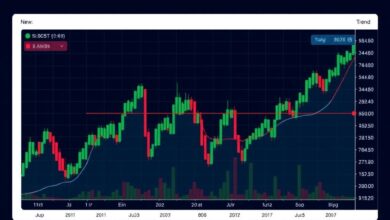What is tax-efficient investing and how to apply it

A strategic focus on planning can significantly enhance your investment returns. Prioritizing a tax shelter can protect your assets from unnecessary taxation, allowing your wealth to grow without the burden of immediate tax liabilities.
Consider holding investments for longer periods to benefit from lower capital gains rates. By optimizing your portfolio with a mix of taxable and tax-advantaged accounts, you can maximize after-tax returns. Techniques such as tax-loss harvesting can also be employed to offset gains, further enhancing overall performance.
Utilizing tax-efficient funds or ETFs that minimize distributions is another method for maintaining growth while reducing tax burdens. Regularly reviewing and adjusting your asset allocation based on changing tax laws and personal financial goals ensures ongoing optimization of your investment strategy.
Maximizing Retirement Account Benefits
Contribute the maximum allowable amount to your retirement accounts each year. For 2023, the limit for 401(k) plans is $22,500, with an additional catch-up contribution of $7,500 for those aged 50 and over. This not only enhances your savings but also reduces your taxable income.
Utilize tax-deferred accounts like Traditional IRAs and 401(k)s to accumulate capital gains without immediate tax implications. By deferring taxes on investment returns, you can allow your capital to grow more efficiently over time.
Consider Roth IRAs for their unique advantage: qualified withdrawals are tax-free in retirement. This is especially beneficial if you anticipate being in a higher tax bracket later in life. Converting some of your Traditional IRA funds into a Roth can also be a smart move if executed during lower-income years.
Diversify asset allocation within these retirement vehicles. Holding both stocks and bonds helps balance risk and optimize returns across different market conditions. Stocks typically yield higher long-term returns, while bonds offer stability.
Regularly rebalance your portfolio to maintain desired risk levels and capitalize on market fluctuations. This helps ensure that no single asset class dominates your holdings, protecting against potential downturns.
Take advantage of employer matching contributions in 401(k) plans. If available, always contribute enough to receive the full match; this is essentially free money that enhances your overall savings.
Monitor withdrawal strategies as retirement approaches. Plan distributions carefully to minimize tax liabilities while maximizing net income during retirement years. Using a combination of account types can help manage taxable events effectively.
Utilizing Tax-Loss Harvesting
Implement tax-loss harvesting to enhance after-tax returns. This involves selling underperforming assets to offset capital gains realized on winning investments. The goal is optimization of your portfolio while remaining compliant with tax regulations.
Identify potential losses within your investment portfolio, making sure to assess the holding periods of assets. Losses can be used to reduce taxable income and thus create a more favorable tax shelter. Keep in mind that the IRS requires adherence to the wash-sale rule, which disallows claiming a loss if you repurchase the same or substantially identical asset within 30 days.
This method serves as a powerful tool in long-term financial planning, enhancing overall returns through smart management of tax liabilities. Regularly reassess your holdings to capitalize on opportunities for loss realization throughout the year rather than waiting until year-end. This proactive approach can significantly improve your investment outcomes over time.
Choosing Tax-Friendly Investments
Prioritize investments that generate minimal capital gains. Focus on index funds and exchange-traded funds (ETFs) with low turnover rates, as they typically realize fewer taxable events compared to actively managed funds.
Consider municipal bonds, which offer tax-exempt interest income. These can serve as an effective tax shelter for high-income earners, allowing you to preserve more of your returns without incurring federal taxes.
Invest in growth stocks rather than dividend-paying stocks. Growth companies tend to reinvest profits back into the business, resulting in capital appreciation instead of immediate taxable income from dividends.
Utilize tax-efficient investment accounts such as Roth IRAs or Health Savings Accounts (HSAs). Contributions to these accounts can grow tax-free, optimizing your long-term wealth while minimizing current tax liabilities.
Monitor your portfolio regularly for opportunities to harvest losses. Offset gains with losses to reduce your overall tax burden effectively. This requires strategic planning and awareness of the timing of asset sales.
Finally, be mindful of holding periods. Assets held for longer than one year qualify for lower long-term capital gains rates, enhancing the after-tax return on your investments significantly.
Navigating Capital Gains Taxes
To optimize your investment returns while minimizing the impact of capital gains taxes, consider these actionable steps:
- Hold Investments Long-Term: Assets held for over a year typically incur lower tax rates compared to short-term holdings. This can significantly enhance net returns.
- Utilize Tax Shelters: Maximize contributions to accounts like IRAs and 401(k)s, which allow for tax-deferred growth. This strategy not only preserves your capital but also increases potential compounding effects.
- Implement Strategic Planning: Assess your expected income for the upcoming year to determine the best timing for asset sales. Selling in a low-income year could reduce tax liabilities.
- Diversify Across Asset Classes: Consider investments that generate qualified dividends or long-term capital gains, which are taxed at lower rates than ordinary income.
- Offset Gains with Losses: Engage in tax-loss harvesting by selling underperforming assets to offset realized gains, thereby reducing overall taxable income.
Each of these recommendations can help in navigating the complexities of capital gains taxes and ultimately enhance your financial outcomes.






